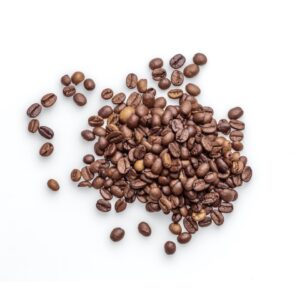COFFEE
Dry weather in Brazil is favorable to harvest, and a weak currency should encourage Brazilian growers to sell their crop to foreign customers, but stock levels are tight and global exports are lagging a year ago. September coffee reached a six-week high early Thursday but fell back into negative territory and finished with a moderate loss and a negative daily reversal. The Brazilian currency showed weak technical action with a gap lower and steep selloff, and if it continues that way, it could induce more selling in coffee. The currency has fallen 4% against the dollar since putting in a 15-month high last Friday. The Brazilian co-op Cooxupe said that their farmers completed 66.8% of their 2023 harvest by last Friday versus 62.8% on that same date last year. This is the fastest pace in three years. The International Coffee Organization pegged global Arabica exports at 6.238 million bags in June, 12.4% below last year.

COCOA
After holding within a tight range following a negative key reversal on July 27, cocoa appears to be breaking out to the downside. And unless there is significant improvement in global risk sentiment, prices could maintain downside momentum going into the weekend. A shift towards drier weather in updated forecasts for West African growing areas next week has weighed on cocoa prices, as that could speed up the harvest of their mid-crop cocoa and result in more cocoa reaching port facilities over the next few weeks. Consumer demand for chocolate has been resilient, with several major chocolate makers upgrading their sales guidance. The discount of London September futures to December is widening, indicating near term supply is improving.
COTTON
Lower equity markets and disappointing export sales are pressuring cotton from the demand side, but a recovery in crude oil and ongoing concerns over the 2023 crop lend support. US cotton export sales for the week ending July 27 showed net cancellations of 9,912 bales for the 2022/23 (current) marketing year and net sales of 33,936 for 2023/24 for a net sale of 24,024. This was down from 61,888 the previous week and was the lowest since December 15. Cumulative sales for 2023/24 have reached 2.510 million bales, down from 4.828 million a year ago and the lowest since 2014. However, there were 2.367 million bales of outstanding old crop sales that could be rolled into new crop. The weekly US drought monitor showed 20% of US cotton production was in an area experiencing drought as of August 1, which was unchanged from the previous week. The report said temperatures were near normal to slightly above over most of the southern US, with the greatest departures from normal in west Texas and the Texas and Oklahoma panhandles at 4-6 degrees above normal. The report also stated that it was an “incredibly” dry week over the region with only a few pockets of showers over northern Arkansas and coastal areas of Texas. Most of the area recorded zero precipitation. The forecast also calls for more heat in the Delta, with daily highs in the 100s and lows in the 70s. The heat makes it stressful for cotton filling. This suggests that there could be further deterioration in US crop conditions in Monday’s report.
SUGAR
To climb back above the 50-day moving average and regain upside momentum, sugar probably needs to find fresh bullish supply news. The October contract fell to a two-week low yesterday and followed that with additional selling overnight. Brazilian production is up sharply from last year, aided by good harvest weather for the cane crop and a larger share of cane processing going to sugar. A gap lower open and a steep selloff in the Brazilian currency to a 3 1/2-week low yesterday could encourage Brazilian mills to produce more sugar for export market versus producing ethanol, which is consumed domestically. During the first 3-1/2 months of the 2023/24 season, Brazil’s Center-South mills have reduced ethanol’s share of crushing 4.4% from last year. But gasoline futures rose by 31.3 cents a gallon (up 12.1%) during the second half of July, which raised the possibility that the Unica supply report for that period will show some movement from sugar production to ethanol.
Interested in more futures markets? Explore our Market Dashboards here.
Futures and options trading involve significant risk of loss and may not be suitable for everyone. Therefore, carefully consider whether such trading is suitable for you in light of your financial condition. The information and comments contained herein is provided by ADMIS and in no way should be construed to be information provided by ADM. The author of this report did not have a financial interest in any of the contracts discussed in this report at the time the report was prepared. The information provided is designed to assist in your analysis and evaluation of the futures and options markets. However, any decisions you may make to buy, sell or hold a futures or options position on such research are entirely your own and not in any way deemed to be endorsed by or attributed to ADMIS. Copyright ADM Investor Services, Inc.
